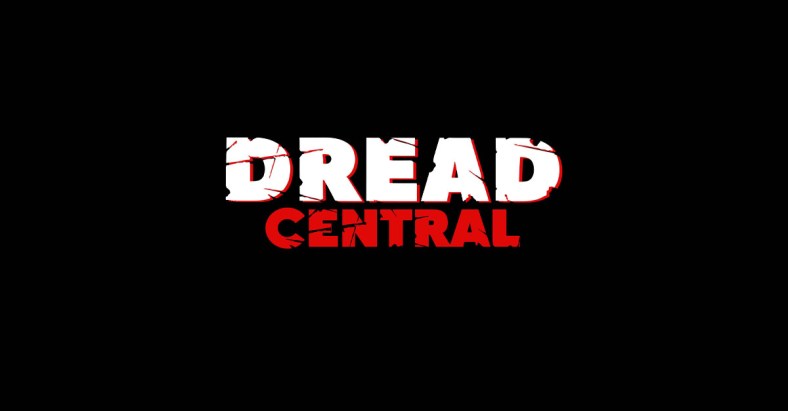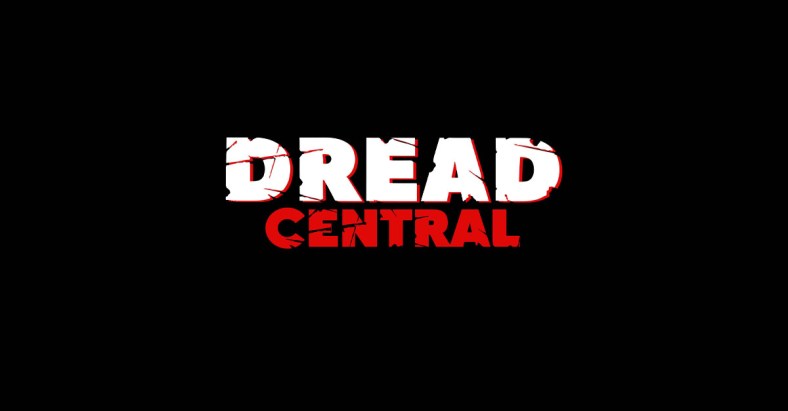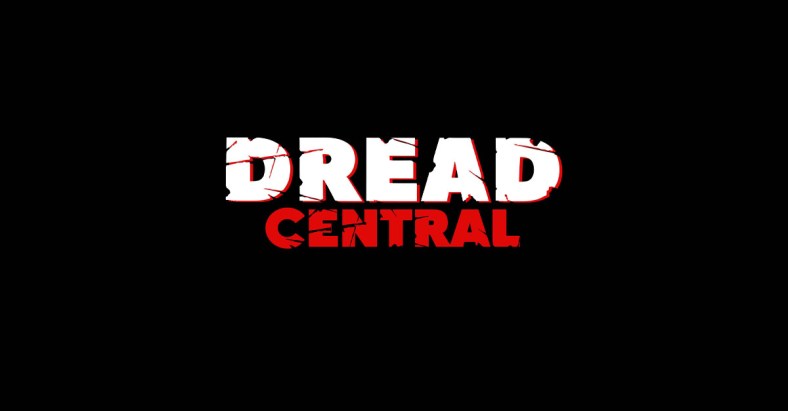Exclusive: Cinematographer Maxime Alexandre on Shooting Annabelle: Creation, The Nun, and More!

Next Friday sees the release of Annabelle: Creation, the prequel to the 2014 spinoff from James Wan’s The Conjuring. In it, we see the beginning of Annabelle and her evil curse as it attacks a group of young orphan girls who move into the home of an ex-dollmaker.
Related Story: Exclusive: Stream Two Tracks From Benjamin Wallfisch’s Annabelle: Creation Score
I got the chance to speak with the film’s cinematographer, Maxime Alexandre, who is known to horror fans for his work on films such as High Tension, The Hills Have Eyes, P2, The Crazies, Silent Hill: Revelation, and much more. We discussed his approach to the film’s use of light versus dark, how the structure of the house influenced his style, the process of collaborating with director David F. Sandberg, and much more. Give it all a read below!
David F. Sandberg directs from a screenplay by Gary Dauberman, who also wrote Annabelle. The film stars Stephanie Sigman (Spectre), Talitha Bateman (The 5th Wave), Lulu Wilson (Ouija 2, Deliver Us from Evil), Philippa Coulthard (After the Dark), Grace Fulton (Badland), Lou Lou Safran (The Choice), Samara Lee (Foxcatcher, The Last Witch Hunter), and Tayler Buck in her feature film debut, with Anthony LaPaglia (“Without a Trace”) and Miranda Otto (“Homeland”, the Lord of the Rings trilogy).
Annabelle: Creation has been rated R by the MPAA for horror violence and terror. Slated for release August 11th, 2017, the film will be distributed by Warner Bros. Pictures.

Photo credit: Justin Lubin
Dread Central: Annabelle: Creation is set in the early 20th century, so how did you approach shooting the film with that in mind?
Maxime Alexandre: As much as having a period movie for a cinematographer is something exciting, I do have a priority for my work, which is finding the adequate balance between the production designer, costumes and all creative intentions in order to create the most beautiful, effective and powerful cinematography for the director’s vision.
The house’s metamorphosis was so important for the story telling; isolated, surrounded by dry grass and few trees, in a place where nothing moved for years before the orphans arrived, but for the girls that house was the biggest house they had ever had, the most amazing place they had ever been, so the color palette had to be created from inside and only the color of the sun shapes would reflect the warm colors of the exterior.
My personal rule was drawing the light into the amazing work of Jennifer Spencer, our production designer. We recreated a level and a direction of light comparable to a Dutch painting, and then the costumes, makeup and hairdresser applied that magical touch to the cast. I like to say that Annabelle: Creation is my most glamorous work I’ve done!
DC: There are strong contrasts between light and darkness in the film. What challenges did you face with those differences in lighting?
MA: Well, when you jingle with the darkness the contrast is your biggest enemy. Let me say that you need a little bit of courage and some time and go for what you like and not stopping in front of those numbers that modern cinematography gives you.
When I met David the first things he told me was; “Maxime, I want to see real dark, I want to see darkness moving.” Darkness isn’t just a light level in horror movies, and David wanted to give it a real character – It’s like Darkness deserves a title along with the cast titles!
It takes beautiful teamwork; you know when the team realizes that we are doing something special. We are all seated around a table listening to David’s vision and the art department and props shared ideas of practical light, then together we gave them a proper light shape with the help of the electrical team. It helps to have everybody moving in a singular direction.
DC: The majority of the film takes place in the house, where it can feel very narrow and claustrophobic. How did that affect your cinematography?
MA: The scale of the house we built on stage wasn’t as small as you may think. The two floors were built into two different parts. The two higher constructions were the well and the elevator, and this last one (the elevator) was really the tightest place we shot.
The lighting concept was focused into light sources forming outside recreating a Dutch painting school mood and also to give David the opportunity to move as much as possible into the space. Our major difficulties were avoiding shadows and therefore I have to thank my camera operator BJ McDonnell for his amazing patience, moving like a feather around the windows.
Nights were technically very exciting as we often had to balance, in the best way, the moonlight and the various tricks we used to have dynamic blacks.
DC: When preparing to shoot Annabelle: Creation, what were some films or styles you used as an influence in your approach?
MA: I never use, or rarely use, other movies as reference to build my cinematography. It may happen when you’re looking for some shots or camera movements but not for the style of your work. Every director’s idea is unique and so the cinematography has to be a part of his or her vision. After spending some time understanding the director’s vision my first step is to build, what I call, a Light Concept, a montage of paintings and photography that will express my interpretation of what we’ve discussed. Then the director will clean or keep everything and from there, step-by-step, I would begin that delicate part of approaching all of the other creatives on the crew.
DC: For the more tech-obsessed readers, what specific kinds of equipment, such as cameras and lenses, did you primarily use?
We’ve shot in Alexa with Leica Summilux C, we did some tests with different lenses but David and myself were pretty impressed about the Leica. Of course one of the highest quality I’ve ever seen but I have to admit that they have some magic on acquiring the warm tones. I use the same lenses for The Nun too.

Photo credit: Justin Lubin
DC: What was it like working with David F. Sandberg on the film, and how did his vision help guide you?
MA: Working with David has been a terrific experience. He is a lovely person, but as a good Scandinavian it is very difficult to understand when he is happy or not, so sometimes when the crew was trying to understand his emotion I would scream from a side of the set “Cinema, Cinema!” Every time the shot deserved it… which is something I do often but rarely as much as I did on Annabelle!
Seriously, I have to admit that his freshness in the movie industry makes him absolutely unique and talking with him in the simplest way and natural as possible makes the work a real pleasure. I love all the directors I’ve worked with but when you can talk about vision, ideas and dreams as you imagine them, not the way you want to do them, that involves all of the crew in the production, with all of the right moods, to create something unique… something “Cinema, Cinema!”
DC: Alternatively, did your experience over the years cause you to show David alternative ways to shooting scenes that he didn’t think of or consider?
MA: You know, a cinematographer materializes the director’s dreams and vision. I’m giving those ideas the right color balance, proper dynamic into the camera motion and appropriate depth of field for each emotion. Of course my experience helps all of it and more, but you need to work in a tight collaboration with all the crew from the production designer to the colorist in post-production to make something great.
DC: I know that you worked on The Nun, so you’re becoming very familiar with the universe of The Conjuring. Considering you’re no stranger to the horror genre, what is different about these films when it comes to your job?
MA: Both of them were prequels so we could have done something totally different, but it would have been a mistake. The cinematography is different in the subtle tone of period, stories are different, but the motion, the tension and the intensity of each one of them are incontestably part of what we can now call The Family.
DC: Over the years, you’ve been a part of many highly regarded horror films. From a cinematographer’s perspective, what are your thoughts on the genre and how it has evolved over the past several years?
MA: There are two different worlds of horror movies, the one that is inspired by an anthology where the visceral pleasure drives the audience to appreciate the evolution of the killer more than wondering about the prey and the horrors that involve the audience directly. Both of them give an enjoyable adrenaline rush. I always treat both of them with the same energy enhancing the beauty of life in order to drag the audience into the tension even before they realize that the descent has already started.
DC: Since you’ve shot for films across many countries, I’m curious how, if at all, the location of a production affects how you shoot the movie?
MA: Indeed, I feel very lucky about it, and yes it does. As I was telling you before, the very first step for my work is the Light Concept, the research of painting and photography as reference to my interpretation of the director’s first notes, and then the second step is approaching with still photography of the locations that concept of lighting. As with every step, this one is essential to find the proper balance with the rest of the creativity.
Although if you mean transpose color palettes from one culture into another, no I’ve never done that, and this is a very important point of cinematography, except if it’s a real creative intention. I feel that it’s wrong to detach the photography from the rest of the story-telling. A movie is successful when the audience has been transported into a story. I believe that if an audience appreciates a single art and not the movie by itself the effort would be wasted.

Photo credit: Justin Lubin
Synopsis:
Several years after the tragic death of their little girl, a doll maker and his wife welcome a nun and several girls from a shuttered orphanage into their home. They soon become the target of the doll maker’s possessed creation, Annabelle.

Categorized:News

